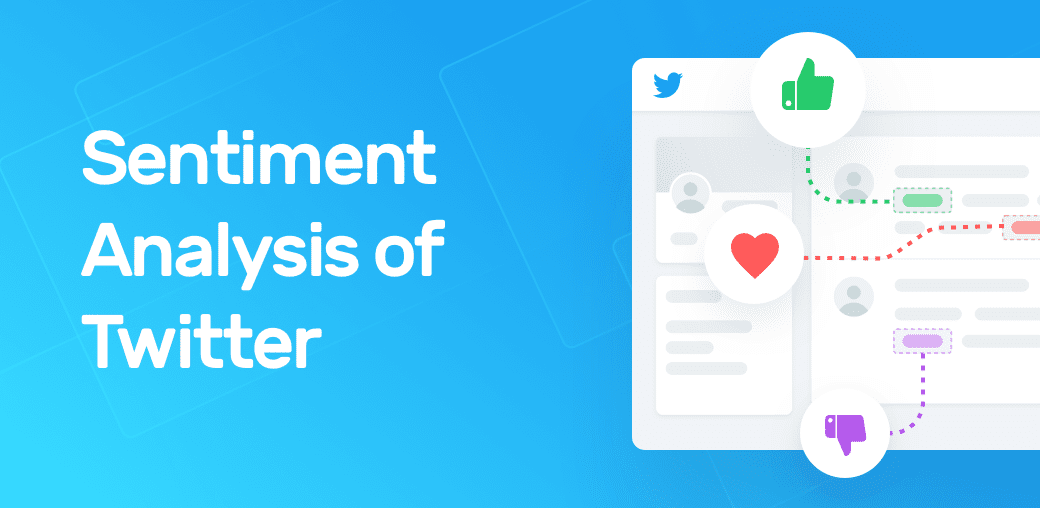In today’s digital age, social media platforms have become a powerhouse for communication, allowing people from all corners of the world to express their thoughts and emotions. Among these platforms, Twitter stands out as a microblogging site where users can share their opinions, ideas, and sentiments in just 280 characters. But have you ever wondered how these tweets reflect the emotions of the users? This is where sentiment analysis for Twitter comes into play.
Understanding Sentiment Analysis For Twitter

1. What is Sentiment Analysis?
Sentiment analysis, also known as opinion mining, is a technique used to determine the emotional tone behind a piece of text. In the case of Twitter, it involves analyzing tweets to classify them as positive, negative, or neutral based on the language used.
2. The Importance of Sentiment Analysis
In a world where information travels at the speed of light, businesses and individuals alike are interested in gauging public opinions quickly and accurately. Sentiment analysis provides valuable insights into how a particular topic, product, or event is perceived by the masses.
Methods of Sentiment Analysis for Twitter
1. Text Preprocessing
Before analysis begins, the raw text data needs to be cleaned. This involves removing special characters, punctuations, and URLs to ensure accurate results.
2. Lexicon-based Analysis
Lexicon-based sentiment analysis involves using a pre-built dictionary of words and their associated sentiments. Each word is assigned a positive, negative, or neutral value, and the overall sentiment of the text is calculated based on the aggregate scores of the words.
3. Machine Learning Approaches
Machine learning algorithms, such as Naive Bayes, Support Vector Machines, and Recurrent Neural Networks, are commonly used for sentiment analysis. These algorithms learn from labeled datasets and can make predictions on the sentiment of new tweets.
Challenges
1. Sarcasm and Irony
Twitter is rife with sarcasm and irony, which can be challenging for sentiment analysis algorithms to accurately interpret due to their reliance on literal meanings.
2. Emojis and Emoticons
Emojis and emoticons are used extensively on Twitter to convey emotions. Deciphering their intended sentiment can be difficult, as they often vary based on context.
3. Shortened Text and Typos
The character limit on Twitter often leads to creative abbreviations and typos. Decoding such texts requires an understanding of internet slang and the ability to normalize variations.
Applications of Sentiment Analysis
1. Brand Monitoring
Companies track sentiment on social media to assess public perception of their products and services. Positive sentiments can be leveraged for marketing, while negative sentiments can prompt improvements.
2. Political Analysis
During elections and important political events, sentiment analysis provides insights into public opinions. Politicians can gauge their popularity and adjust their campaigns accordingly.
3. Crisis Management
During crises or emergencies, sentiment analysis can help authorities understand the public’s emotional state. Also, this information aids in formulating effective responses and support measures.
Conclusion
Sentiment analysis for Twitter opens a window into the collective emotions of users. By unraveling the sentiment behind tweets, businesses, researchers, and policymakers can make informed decisions. It’s not just about understanding text; it’s about understanding the pulse of the digital society.
If you’re interested in harnessing the power of sentiment analysis for your business or research, request a demo from AIM Technologies today. Our advanced solutions can help you uncover insights hidden within the vast sea of social media data.
FAQs
Can sentiment analysis accurately interpret sarcasm in tweets?
- While some algorithms are improving in detecting sarcasm, it remains a challenge due to its contextual nature.
How do emojis affect sentiment analysis accuracy?
- Emojis can be tricky; some algorithms treat them as sentiment indicators, but their interpretation depends on the overall context.
Can sentiment analysis predict the success of a marketing campaign?
- Sentiment analysis can provide insights, but success depends on various factors beyond sentiment alone.
Are there languages where sentiment analysis is less accurate?
- Yes, sentiment analysis can be less accurate in languages with complex syntax and semantics.
How often should sentiment analysis models be updated?
- Regular updates are essential to adapt to evolving language trends and user behaviors.




